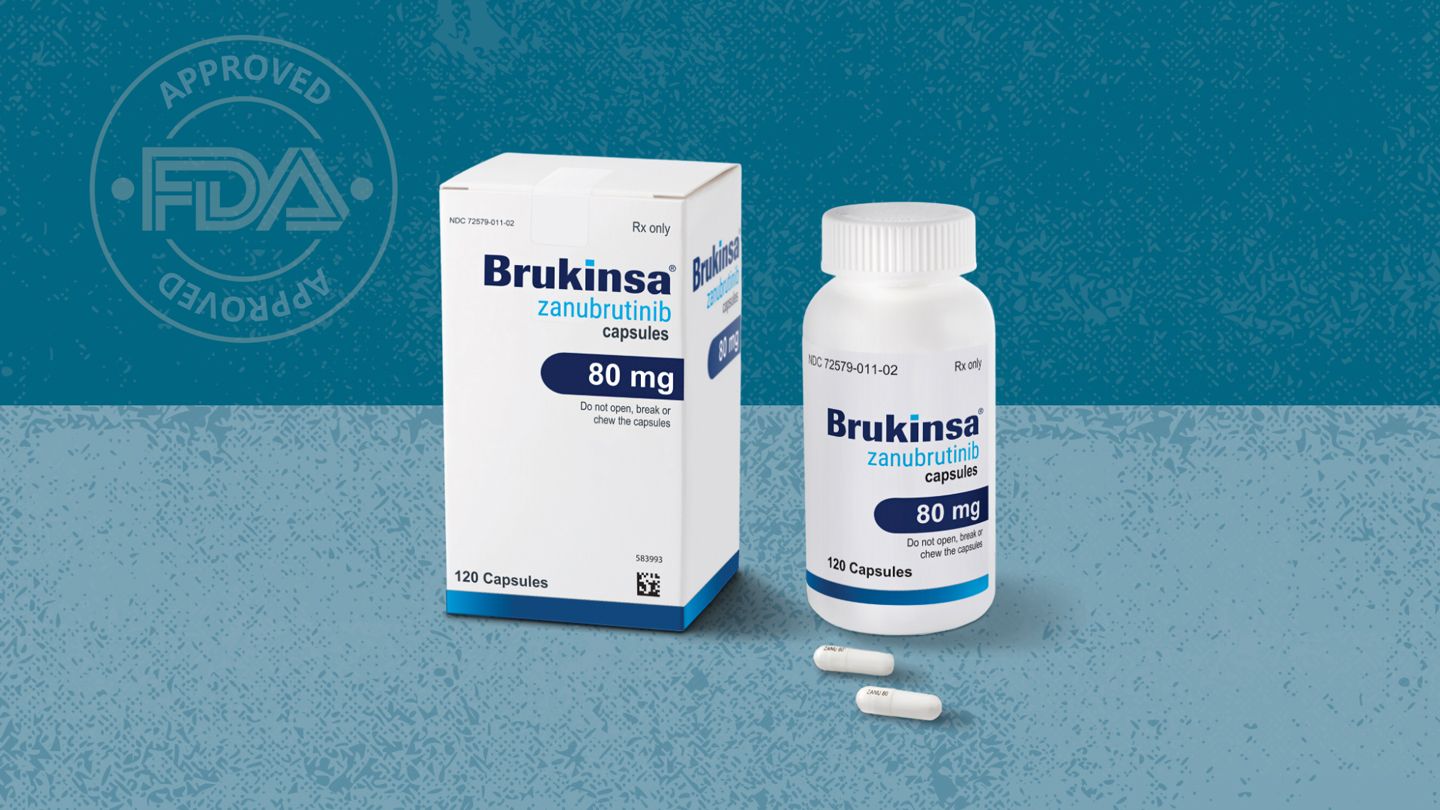The U.S. Food and Drug Administration (FDA) has approved Brukinsa (zanubrutinib) for the treatment of the blood and bone cancers known as chronic lymphocytic leukemia (CLL) and small lymphocytic lymphoma (SLL). The National Comprehensive Cancer Network has endorsed zanubrutinib as a CLL-SLL treatment for both newly diagnosed and previously treated patients.
Zanubrutinib belongs to a class of drugs known as BTK inhibitors (BTKi), which work by preventing the growth of malignant B-cells (white blood cells that make illness-fighting antibodies), according to the National Cancer Institute.
The FDA previously approved the drug, which is made by the Beijing-based pharmaceutical company BeiGene, for three other forms of lymphatic cancer: Waldenström’s macroglobulinemia, marginal zone lymphoma, and mantle cell lymphoma.
CLL is a common form of leukemia, accounting for about one-quarter of all new cases each year; the American Cancer Society (PDF) estimates there will be almost 19,000 new cases and close to 4,500 deaths in the United States in 2023. SLL is nearly the same form of cancer as CLL, the only difference being that malignant cells are concentrated in the lymph nodes rather than the blood and bone marrow, and it’s much rarer.
“I’m pleased that the approval of zanubrutinib provides a new BTKi option for people with CLL-SLL, with demonstrated efficacy as well as being very well tolerated long-term,” said Brian Koffman, MD, chief medical officer and executive vice-president at CLL Society, in BeiGene’s press release. “People with CLL can remain on therapy for years so tolerability is an important consideration,” he added.
Zanubrutinib Performed Better Than Other Drugs for CLL and SLL in Clinical Trials
For this new approval, the FDA reviewed data from a phase 3 trial that compared zanubrutinib against Imbruvica (imbrutiniv), another BTK inhibitor, in previously treated CLL-SLL.
In the study, BeiGene presented a report from an independent data review committee on findings the company originally submitted to the FDA. In the original submission, superiority of tumor shrinkage by zanubrutinib over imbrutiniv didn’t reach statistical significance. But when an independent review committee analyzed the data, the tumor shrinkage response rate was 80.4 percent of patients with previously treated CLL-SLL, versus 72.9 percent for Imbruvica.
In another trial for newly diagnosed CLL-SLL patients, zanubrutinib significantly cut the risk of disease progression or death by 58 percent when compared with a combination of the existing medications bendamustine and rituximab.
Zanubrutinib may also have a safety advantage over its competitors. According to data from BeiGene, after a median two years of follow-up, 4.6 percent of patients taking zanubrutinib developed atrial fibrillation or heart flutter, versus 12 percent for imbrutiniv.
Across the trials, side effects were reported for less than 30 percent of participants. The most common side effects were:
- Decreased neutrophil count (42 percent)
- Upper respiratory tract infection (39 percent)
- Decreased platelet count (34 percent)
- Hemorrhage (30 percent)
- Musculoskeletal pain (30 percent)
What Is the Difference Between Chronic Lymphocytic Leukemia (CLL) and Small Lymphocytic Lymphoma (SLL)?
Chronic lymphocytic leukemia is a type of cancer of the blood and bone marrow. “Chronic” refers to CLL’s relatively slow progression compared with other types of leukemia while “lymphocytic” references the cells affected by the disease — a group of white blood cells called lymphocytes, which help the body fight infection. CLL typically affects older adults.
SLL is sometimes referred to as a non-Hodgkin’s lymphoma, which describes a group of cancers that affect lymphocytes. With SLL, ineffective lymphocytes multiply in lymph nodes — pea-shaped immune-system organs in the neck, groin, armpits, and other parts of the body. SLL tends to grow slowly and is often detected during a blood test ordered for a different reason.
How Do You Treat Chronic Lymphocytic Leukemia and Small Lymphocytic Lymphoma?
Doctors treat CLL and SLL the same way. Both diseases generally have a five-year relative survival rate of 87.5 percent.
Treatments include chemotherapy, immunotherapy, and therapies that target proteins that can help the cancer cells grow and survive. Brukinsa is a targeted therapy.
Common drugs for both conditions include ibrutinib (Imbruvica), alone or with rituximab (Rituxan); acalabrutinib (Calquence), alone or with obinutuzumab (Gazyva); venetoclax (Venclexta) and obinutuzumab; venetoclax alone; and ventoclax with rituximab.
Treatment for both conditions can also include stem cell transplant.




